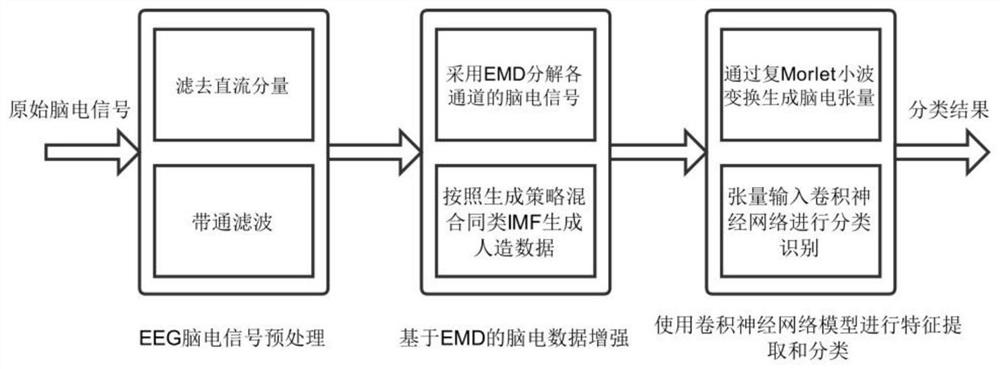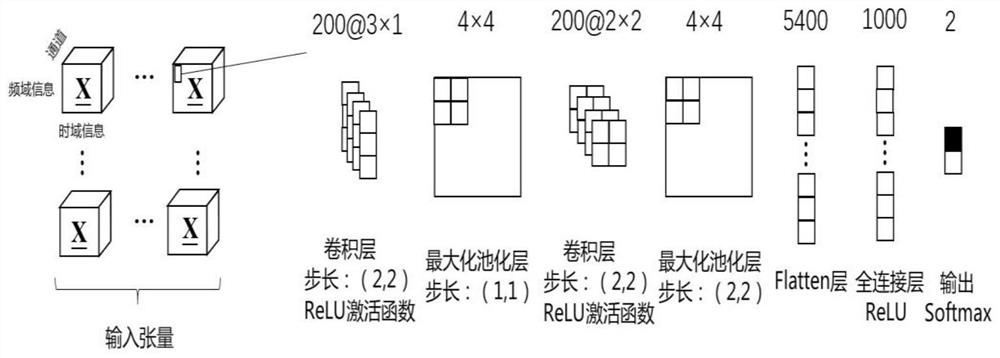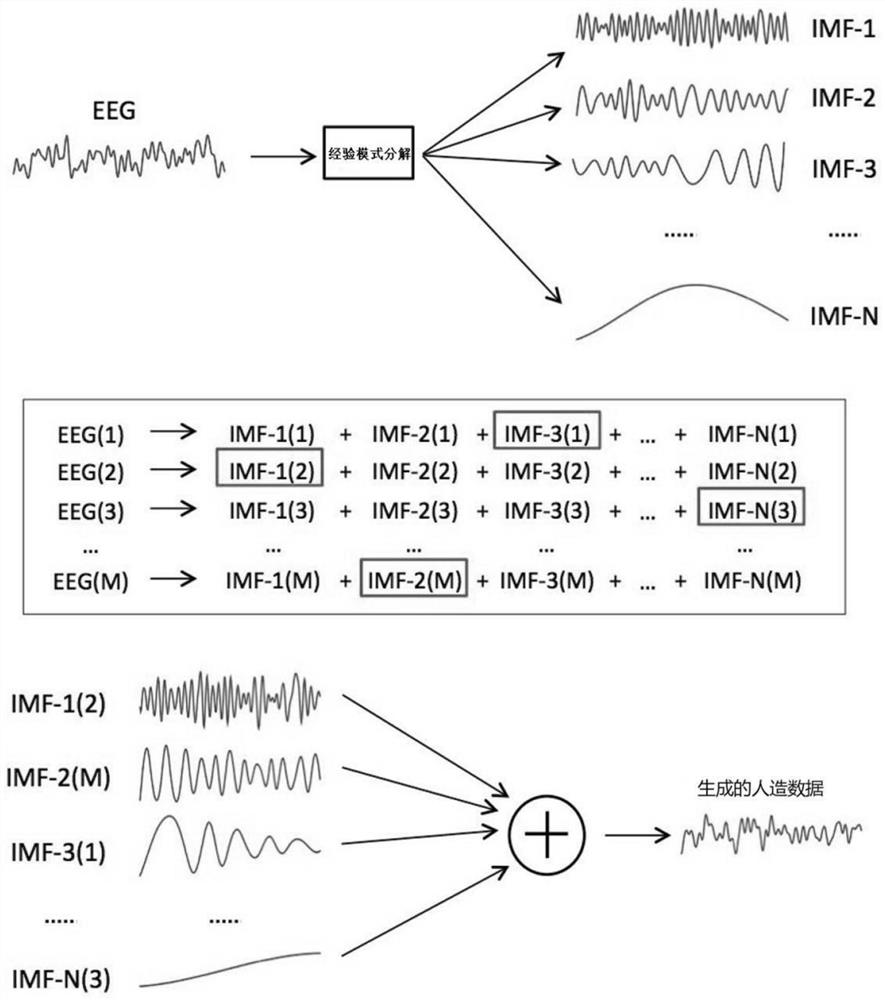SSVEP EEG classification method based on convolutional neural model augmented with EMD data
A technology of convolutional neural and classification methods, applied in the fields of SSVEP EEG classification, artificial intelligence and pattern recognition, and brain-computer interface, to achieve the effect of optimizing models and inputs, high application prospects, and increasing ease of use
- Summary
- Abstract
- Description
- Claims
- Application Information
AI Technical Summary
Problems solved by technology
Method used
Image
Examples
Embodiment Construction
[0030] For the original EEG data, the preprocessing is mainly to filter out the DC component and band-pass filtering operations. first of all
[0036]
[0038] A large amount of artificial data is generated by randomly extracting and mixing different sequences of IMFs to train the network.
[0045] Referring to Figure 2, it is a structural diagram of a convolutional neural network model. The structure of the convolutional network is as follows, the first layer of convolution
[0048]
[0051] Results: As shown in Figure 5, the average correct rate of 5 subjects exceeded 95%, and the original training set was expanded to 2 times the original maximum.
[0053] Although the above-mentioned embodiments have been described, once those skilled in the art know the basic innovation
PUM
 Login to View More
Login to View More Abstract
Description
Claims
Application Information
 Login to View More
Login to View More - R&D
- Intellectual Property
- Life Sciences
- Materials
- Tech Scout
- Unparalleled Data Quality
- Higher Quality Content
- 60% Fewer Hallucinations
Browse by: Latest US Patents, China's latest patents, Technical Efficacy Thesaurus, Application Domain, Technology Topic, Popular Technical Reports.
© 2025 PatSnap. All rights reserved.Legal|Privacy policy|Modern Slavery Act Transparency Statement|Sitemap|About US| Contact US: help@patsnap.com



